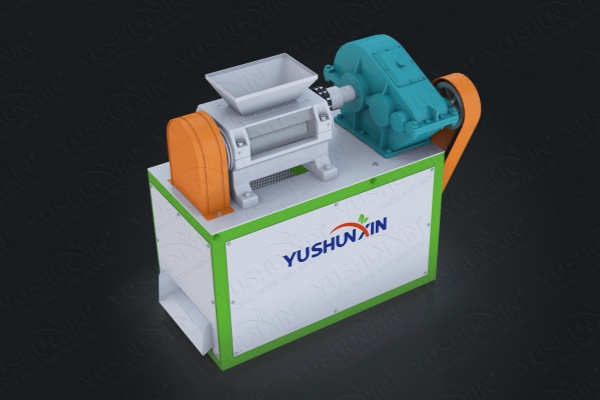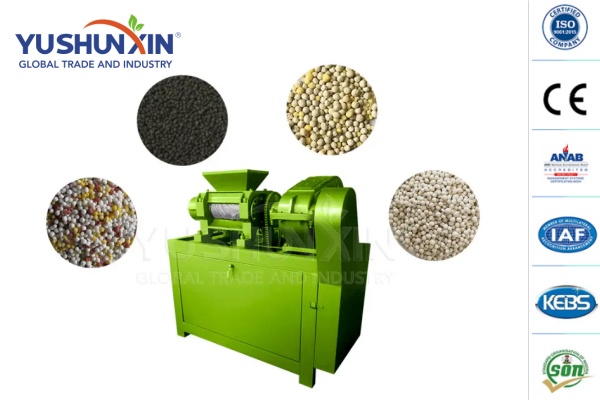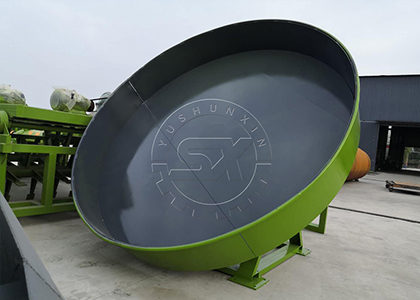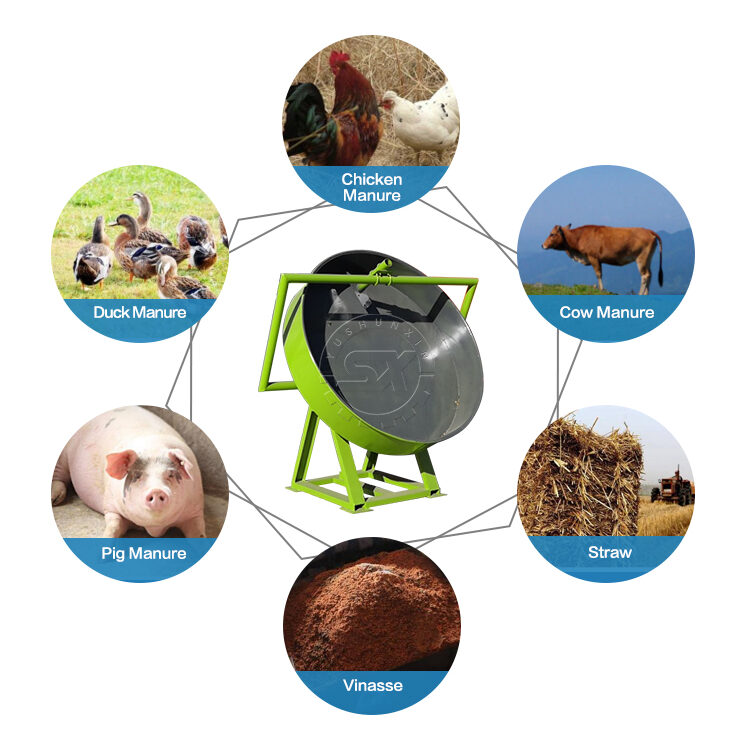Category: NPK fertilizer granulator
What is the process of making 20:10:10 npk fertilizer
The process of making 20:10:10 NPK fertilizer involves several steps that include the blending of raw materials, granulation, drying, and packaging. This type of fertilizer is commonly used in agriculture to provide plants with essential nutrients for growth.
Raw Material Blending
The first step in the process of making 20:10:10 NPK fertilizer is the blending of raw materials. The three main ingredients in this type of fertilizer are nitrogen (N), phosphorus (P), and potassium (K). The numbers 20:10:10 represent the percentage of each nutrient in the fertilizer. To create this blend, the raw materials are mixed together in the correct proportions. The nitrogen component is usually derived from ammonium nitrate or urea, the phosphorus component from superphosphate, and the potassium component from potassium chloride.
Granulation
Once the raw materials have been blended, the mixture is then granulated. This process involves the use of a granulator machine that turns the mixture into small pellets. The granules are then coated with a binding agent to ensure they hold their shape and do not break apart during handling.
Drying
After granulation, the fertilizer pellets are dried to remove any excess moisture. This is an important step as moisture can cause the fertilizer to clump together, making it difficult to spread evenly on the fields. The drying process is typically done in a rotary dryer, which uses hot air to evaporate the moisture from the pellets.
Packaging
Once the fertilizer has been dried, it is ready for packaging. The pellets are placed into bags or containers and sealed to protect them from moisture and other environmental factors. The packaging also includes labels that provide information on the nutrient content and instructions for use.
Quality Control
Throughout the entire process of making 20:10:10 NPK fertilizer, quality control is essential. This involves testing the raw materials and the final product to ensure they meet industry standards. The fertilizer is also checked for consistency in size, shape, and nutrient content to ensure it will be effective when applied to crops.
In conclusion, the process of making 20:10:10 NPK fertilizer is a complex one that requires careful attention to detail and quality control. By following these steps, manufacturers can produce a fertilizer that provides essential nutrients to plants and helps to promote healthy growth.
Why Are Double Roller Extrusion Granulators Ideal for Small-Scale Farmers?
In the field of agriculture, the significance of effective fertilization cannot be overstated. Especially for small-scale farmers, the battle includes a range of issues from scarce resources to the urgent demand for sustainable methods. The adoption of proficient fertilization approaches plays a pivotal role for these farmers, significantly affecting both the yield and quality of their crops. In their journey to overcome these obstacles, finding the right equipment to aid their efforts is of utmost importance.
Benefits of Double Roller Extrusion Granulation Technology
Among the assortment of granulation techniques available, double roller extrusion granulation distinguishes itself through its simplicity and efficiency. This method executes the dry granulation of powder-like materials by forcing them through two rotating rollers that move in opposite directions, compressing the material into a dense form. The outcome is compact, evenly sized granules that ensure a consistent spread across farmlands.

1TPH Model Double Roller Press Granulator
Why Are Double Roller Extrusion Granulators Ideal for Small-Scale Farming?
For small-scale farmers, machinery that is both efficient and simple to operate and maintain is crucial. Double roller extrusion granulators meet these needs by providing an easy-to-use solution with fewer moving components. This leads to decreased maintenance needs and a minimized risk of operational interruptions. Additionally, their granulation process eliminates the need for liquid binders, presenting a cost-effective and cleaner option for farmers operating with restricted resources.

2T-H Roller Compact Granulator for NPK Pellets
The Role of Raw Material Flexibility in Farming Efficiency
One of the key features of a good granulation system is its ability to handle a variety of raw materials. Small-scale farmers often have access to diverse organic matter that can serve as fertilizer, including animal manure, agricultural waste, and compost. A granulator that can process these materials into a uniform product helps farmers utilize locally available resources, thus reducing dependency on commercial fertilizers and promoting a more sustainable approach to agriculture.
Yushunxin’s Approach to Empowering Small-Scale Farmers
Among manufacturers of granulation equipment, Yushunxin has tailored its double roller press granulator to meet the needs of small-scale farmers. By understanding the unique challenges faced by these agricultural practitioners, Yushunxin has designed a machine that emphasizes ease of use, maintenance simplicity, and versatility in handling various raw materials.
Features of Yushunxin’s Roller Compact Granulator
The Yushunxin roller extrusion granulator comes equipped with features that ensure reliability and effectiveness. Its robust construction minimizes wear and tear, while the precision-engineered rollers guarantee a consistent granule size. This results in more accurate application rates and efficient use of materials. Additionally, the granulator operates with low energy consumption, keeping operational costs down for farmers.
Environmental Benefits of Using Yushunxin Granulators
In the current agricultural climate, the emphasis on eco-friendly practices is paramount. The double roller compact pelletizer aligns with these values by facilitating the use of organic materials in the granulation process. This not only reduces the carbon footprint associated with synthetic fertilizers but also improves soil health through the incorporation of organic matter.
Conclusion
In conclusion, for small-scale farmers looking to improve their fertilizer application techniques and embrace a more sustainable farming model, the Yushunxin’s granulator presents an ideal solution. With its combination of efficiency, durability, and environmental benefits, this piece of equipment stands as a wise investment for those aiming to optimize their agricultural operations. You can visit: https://www.extruder-granulator.com/double-roller-extruder-granulator/
How to use rotary drum granulator to make npk fertilizer
Rotary drum granulator is a versatile and efficient machine used in the production of NPK fertilizer. NPK stands for nitrogen, phosphorus, and potassium, which are essential nutrients for plant growth. This type of granulator is commonly used in large-scale fertilizer production plants due to its high output and ability to produce uniform and well-rounded granules. In this passage, we will discuss the steps on how to use a rotary drum granulator to make NPK fertilizer.
Preparation of Raw Materials
Before using the rotary drum granulator, it is essential to prepare the raw materials. The raw materials for NPK fertilizer production include urea, ammonium sulfate, monoammonium phosphate, diammonium phosphate, and potassium chloride. These materials should be crushed into fine powder and mixed in the right proportions to achieve the desired NPK ratio.
Feeding the Raw Materials
Once the raw materials are prepared, they should be fed into the rotary drum granulator. The granulator is equipped with a feeding system that allows for the continuous feeding of the raw materials. The feeding system should be adjusted to ensure that the materials are evenly distributed inside the granulator.
Granulation Process
The granulation process begins as the raw materials are mixed and tumbled inside the rotating drum granulator. The drum is lined with rubber or plastic to prevent the materials from sticking to the walls. As the materials are tumbled, they begin to form granules due to the rolling motion and the addition of a binder, such as water or a liquid fertilizer. And it can make 1-30 t/h npk fertilizer.
Drying and Cooling
After the granulation process, the granules are still wet and need to be dried. The rotary drum granulator is usually equipped with a drying system that uses hot air to remove the moisture from the granules. Once the granules are dry, they are cooled using a cooling system to prevent them from sticking together during storage and transportation.
Screening and Packaging
The final step in the production of NPK fertilizer is screening and packaging. The granules are passed through a screening machine to separate the oversized and undersized granules from the desired size. The oversized granules can be crushed and returned to the granulator, while the undersized granules can be used as a powder fertilizer. The final product is then bagged in bags or bulk containers for distribution.
In conclusion, using a rotary drum granulator to make NPK fertilizer is a straightforward process that involves the preparation of raw materials, feeding, granulation, drying, cooling, screening, and packaging. With the right equipment and proper operation, a rotary drum granulator can produce high-quality NPK fertilizer that can help improve crop yields and soil health.
How to make small scale npk fertilizer
Creating NPK fertilizer on a small scale can be an enriching endeavor for home gardeners, small farms, or even start-up fertilizer producers. NPK stands for Nitrogen (N), Phosphorus (P), and Potassium (K), the three primary nutrients required for healthy plant growth. Here is a comprehensive guide on how to make small-scale NPK fertilizer.
Understanding NPK Ratios
Before diving into production, it’s crucial to comprehend the NPK ratio, which reflects the proportion of nitrogen, phosphorus, and potassium in the fertilizer. The specific needs of the plants being grown will dictate the ideal NPK ratio. A balanced 10-10-10 ratio is a common general-purpose fertilizer, but depending on the crop’s requirements, these ratios can vary.
Sourcing Raw Materials
Nitrogen Sources: For small-scale production, nitrogen can be sourced from blood meal, fish meal, or composted manure. Synthetic options include urea or ammonium sulfate.
Phosphorus Sources: Bone meal is a natural source of phosphorus. Alternatively, rock phosphate can be used if it is ground into a fine powder.
Potassium Sources: Wood ash is a natural source of potassium. Potassium sulfate or potassium chloride can also be used for a more concentrated source.
Equipment and Space
Basic Equipment
- Weighing scales for accurate measurement of ingredients
- Mixing tools such as a shovel or a mechanical mixer
- Protective gear like gloves and masks to prevent inhalation of dust
- Storage containers for both raw materials and the final product
Space Requirements
The space needed for small-scale production can be as simple as a well-ventilated shed or garage. Ensure the space is dry to prevent the fertilizer from clumping and that it is safe from contamination.
Production Process
Step 1: Measuring Ingredients
Using your weighing scales, measure out the raw materials according to the desired NPK ratio. Precision is essential here as it ensures the effectiveness of the final product.
Step 2: Grinding and Mixing
If the raw materials are not already in powdered form, they will need to be ground. Once powdered, mix the ingredients thoroughly to create a homogenous blend. A mechanical mixer can ensure a uniform mix, which is crucial for the fertilizer’s efficacy.
Step 3: Granulation (Optional)
For easier application, the mixed fertilizer can be granulated. Small-scale granulation can be done manually by creating small pellets and drying them, or with the use of a granulation machine. Compaction equipment is suitable for making small scale npk fertilizer.
Step 4: Curing and Drying
The mixture should be left to cure, which can take anywhere from several days to weeks. During this time, the chemical reactions between the components will occur. Following curing, the mixture should be completely dried to prevent mold or caking.
Step 5: Packaging and Storage
Once dry, the fertilizer can be packaged in airtight containers or bags. Label the packages with the NPK ratio and any instructions for use. Store the fertilizer in a cool, dry place until it’s ready to be used.
Safety Considerations
- Always wear protective gear to prevent skin irritation or inhalation of dust.
- Store raw materials and the final product safely to prevent contamination or accidental ingestion by children or pets.
- Ensure good ventilation when mixing and packaging the fertilizer.
Application Guidelines
To use the NPK fertilizer, follow the general rule of thumb of applying it every two to four months, depending on the crop’s needs. However, it’s essential to conduct soil tests to avoid over-fertilization, which can be harmful to plants and the environment.
Conclusion
Making small-scale NPK fertilizer can be a cost-effective and rewarding process, ensuring that the right balance of nutrients is available for plants. With careful planning, accurate measurements, and proper safety precautions, gardeners and small-scale farmers can produce their own high-quality fertilizer to foster bountiful growth and yields. And if you are interested in setting up a npk fertilizer plant, we can provude you with the best solution.
Why Choose a Disc Granulator for Your Business?
In the realm of fertilizer production, choosing the right equipment can significantly impact the quality and efficiency of your operations. One such crucial decision is selecting the right granulation method. Among the various options available, SX disc granulator stands out as a popular choice for businesses due to its numerous advantages.

disc pelletizer for sale
1. Scalability and Adaptability
Whether you are operating a small-scale manufacturing unit or a large industrial facility, our disc granulator can be easily scaled up or down to meet your production demands. This scalability and adaptability make it a suitable choice for businesses with evolving needs or those looking to expand their fertilizer production in the future.
2. Versatility Across Industries
Pan granulators are incredibly versatile, making them adaptable to a wide range of industries. Whether you are in pharmaceuticals, agriculture, food processing, or any other sector, SX disc granulators can handle various materials with ease. Their ability to granulate powders, crystals, or even large particles into uniform, compact granules is a testament to their adaptability. This flexibility allows your business to explore new avenues and cater to diverse market demands without investing in multiple specialized machines.

Raw materials of disc granulator
3. Customization and Innovation
Disc granulators of our company are highly customizable, allowing businesses to tailor the machines to their specific requirements. Whether you need different granule sizes, production capacities, or material handling capabilities, we, as the professional equipment manufacturer, can design disc granulators to meet your unique needs. Furthermore, we make ongoing advancements in granulation technology continuously to enhance these machines, ensuring that your business stays ahead of the curve and remains competitive in the market.
4. Cost-effective Solution
Cost-effectiveness is a significant consideration for any business. Shunxin pan pelletizer offer several advantages in terms of cost savings. Firstly, their simple design and fewer moving parts result in lower maintenance and operational costs. Secondly, disc granulators have high production capacities, allowing you to achieve greater output with reduced labor and energy expenses. Lastly, the ability to process diverse raw materials eliminates the need for separate granulation equipment for different fertilizers, further streamlining costs.

Pan Granulator
5. Easy Operation and Maintenance
Pelletizer disc is designed for ease of operation and maintenance. They feature user-friendly interfaces and controls, making them accessible even for operators with minimal technical expertise. Additionally, their simple structure and fewer components make routine maintenance tasks straightforward, reducing downtime and maximizing productivity.
Conclusion
When it comes to fertilizer production, choosing the right granulation method is paramount. Our disc granulator brings a multitude of benefits to your business, including versatility, efficient granulation, cost-effectiveness, ease of operation and maintenance, and scalability. Contact us for free quotation! You can visit: https://www.fertilizerproductequipment.com/pelletizing-disc/ for more information.

5 Tips to buy NPK fertilizer equipment
October 17, 2024
Compound fertilizer making equipment, Compound fertilizer making line, NPK equipment price, NPK fertilizer granulator, NPK fertilizer making cost, NPK fertilizer production line
Comments Off on 5 Tips to buy NPK fertilizer equipment
cs
Investing in NPK fertilizer equipment is a significant decision for any agricultural business, as it directly impacts NPK fertilizer preparing efficiency and product quality. NPK fertilizers, which supply essential nutrients—nitrogen (N), phosphorus (P), and potassium (K)—are crucial for plant growth, and the right equipment ensures that these nutrients are effectively manufactured and applied. Here are some tips to consider when purchasing NPK fertilizer equipment.
Understand Your Requirements
Before making any purchase, it’s essential to clearly define your NPK compound manufacturing needs. Are you looking for equipment to produce granular, liquid, or powdered NPK fertilizers? Each type requires different machinery and processes. Understanding your specific requirements will help you choose equipment that meets your production goals and fits your budget. Click here to learn more.
Evaluate every Equipment Types
NPK fertilizer production involves several stages, including mixing, granulation, drying, and cooling. Consider equipment for each stage, such as mixers, granulators, rotary drum dryers, and cooling machines. Buy equipment according to your budget for NPK fertilizer production.
Consider Quality and Durability
Quality and durability are paramount when selecting NPK fertilizer equipment. Look for machines made from high-quality materials that can withstand the corrosive nature of fertilizer chemicals. Check for certifications or standards compliance that indicate the equipment meets industry benchmarks. Investing in durable equipment might have a higher upfront cost but will save money in the long run through reduced maintenance and replacement expenses.
Assess Technology and Automation
Modern, automatic NPK fertilizer equipment enhances efficiency and precision. Automated systems can help reduce labor costs and minimize human error. Features like real-time monitoring, computerized control systems, and adjustable settings for different formulations can significantly improve your production process.
Supplier Reputation and Support
Choose a NPK fertilizer machine supplier with a solid reputation for reliability and customer service. Research potential suppliers, read reviews, and, if possible, speak to other customers to gauge their satisfaction. A supplier who offers comprehensive support, including installation, training, and after-sales service, can be invaluable, especially if you encounter problems or need assistance with your equipment.
By carefully considering these factors, you can make a well-informed decision that ensures you purchase the right NPK fertilizer equipment to meet your current and future needs. This strategic investment will ultimately contribute to the success and growth of your agricultural operations. You can visit https://fertilizerequipmentmanufacturer.com/npk-fertilizer-making-machine/ for details.
how to make npk fertilizernpk compound fertilizer equipment manufacturernpk granulating equipment